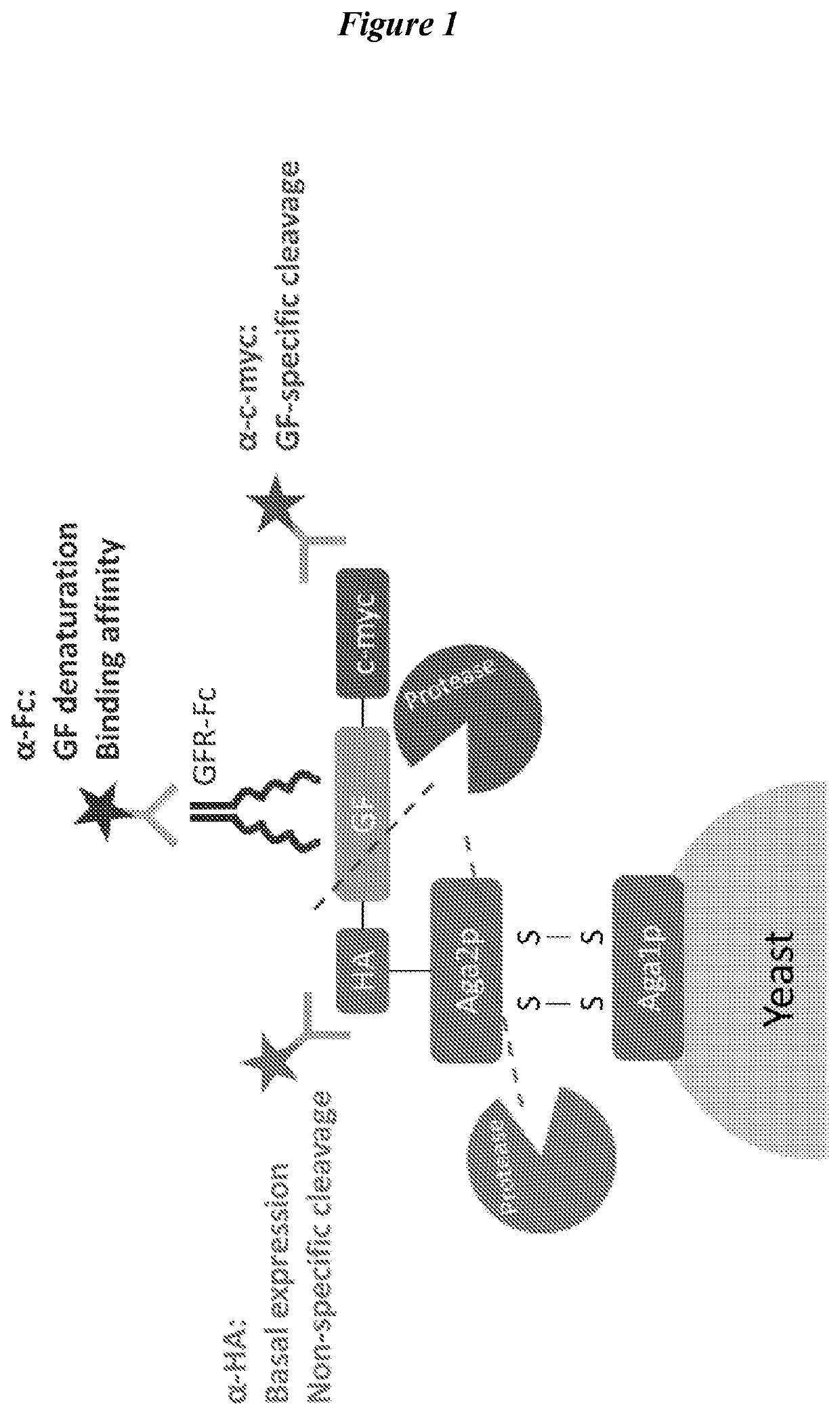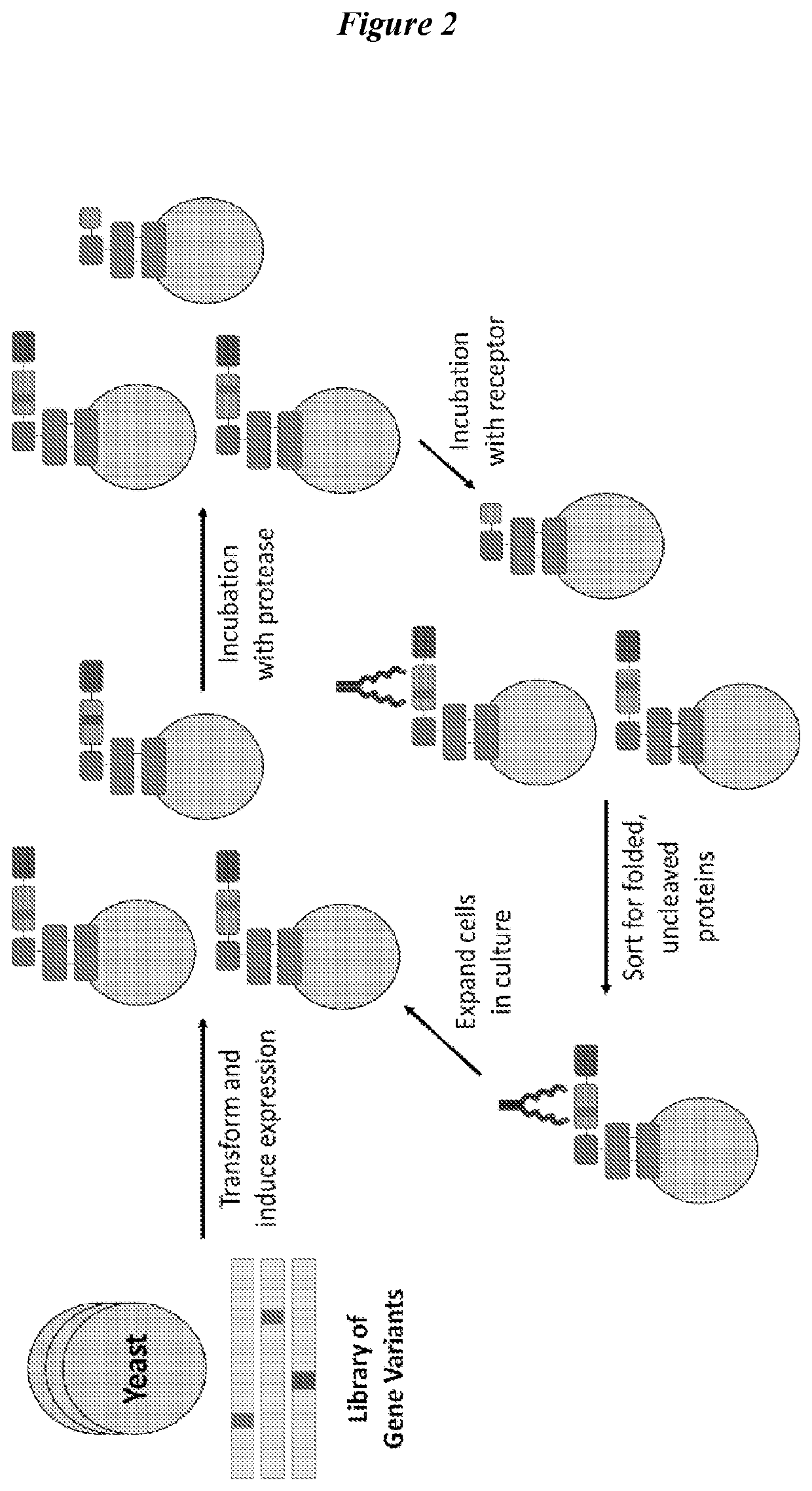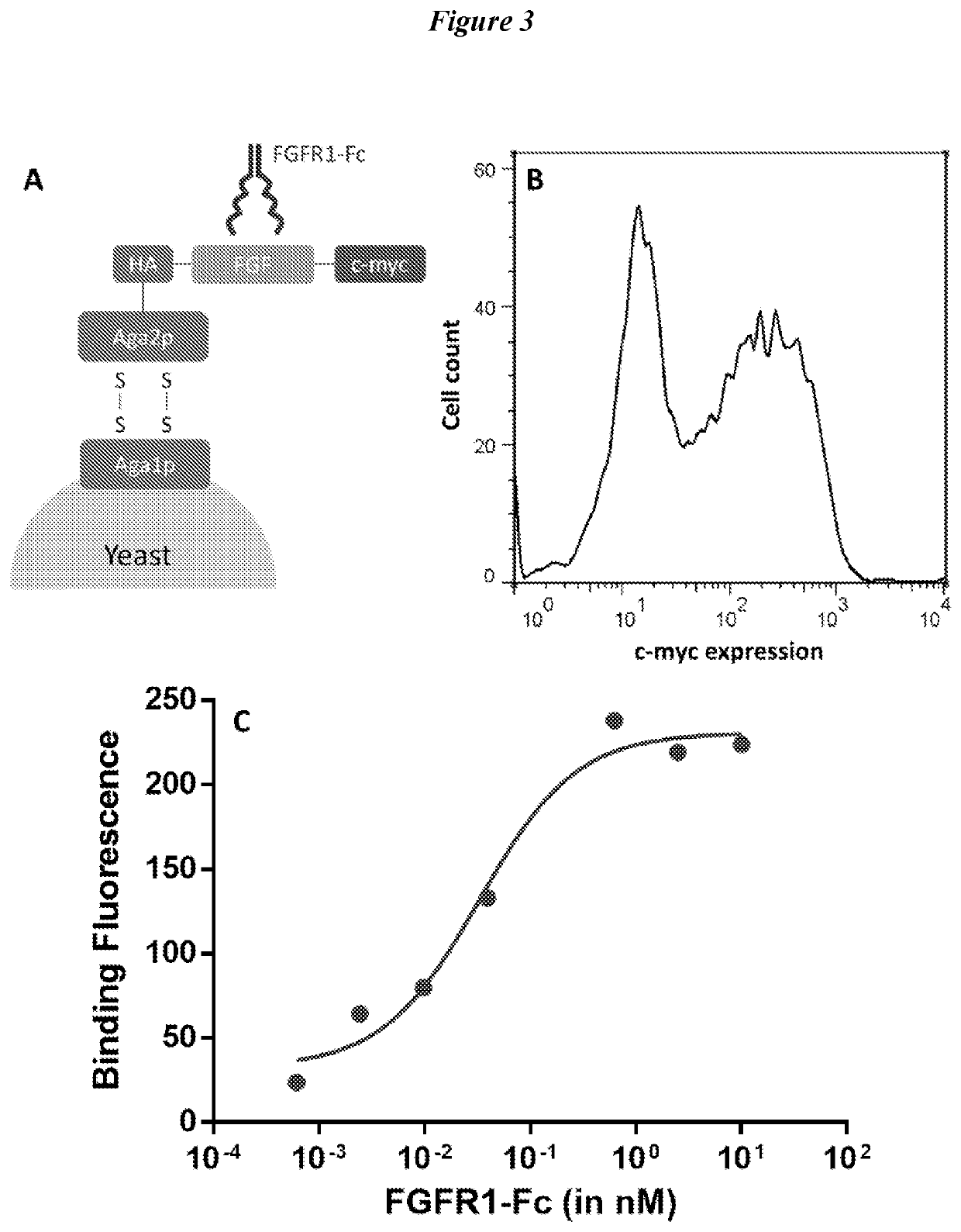Engineered fibroblast growth factor variants as receptor antagonists
- Summary
- Abstract
- Description
- Claims
- Application Information
AI Technical Summary
Benefits of technology
Problems solved by technology
Method used
Image
Examples
example 1
roughput Screening Method for Engineering Proteolytically Stable Growth Factors
Abstract
[0320]Growth factors are an important class of regulatory proteins which have great potential to be developed as therapeutic molecules for regenerative medicine and cancer treatment. However, the activity and efficacy of growth factors as therapeutic molecules are greatly limited by their poor thermal and proteolytic stability. While numerous methods have been developed to engineer growth factors with increased thermal stability, there has been a lack of focus and methods development for engineering growth factors with increased proteolytic stability. Proteases such as plasmin, elastase, uPA, cathepsins, and MMPs play critical roles in extracellular matrix degradation and signal transduction, particularly in wound healing and tumor formation. These proteases have been reported to commonly degrade growth factors as well. In this work, we describe a generalizable method for engineering growth factor...
example 2
ng Proteolytically Stabilized Fibroblast Growth Factor
Abstract
[0345]FGF1 plays a significant role in cell differentiation and the induction of angiogenesis during wound healing, tissue regeneration, tumor formation, and other angiogenesis-dependent diseases. Thus, agonists and antagonists based on FGF1 can have important applications for cell culture and protein therapeutics. However, FGF1 have been reported to exhibit susceptibility to degradation when exposed to proteases in culture. Its poor proteolytic stability can hinder their activity and efficacy in cell culture or when developed as therapeutic molecules. In this example, FGF1 peptides were engineered for proteolytic stability using the yeast display-based screening method described in Example 1. Gating strategies for selection of proteolytically stable FGFs and successfully identify candidates for characterization were explored.
Introduction
[0346]Fibroblast growth factors (FGFs) are part of an important family of growth fact...
example 3
ization of Proteolytically Stabilized Fibroblast Growth Factors
Abstract
[0372]Proteolytic stability can play an important role in improving the efficacy of unstable growth factors, such as FGF1. Studies have shown that FGF1 is rapidly degraded in culture, partially due to proteases that are found in serum or that are expressed by cells. In Example 2, the engineering of FGF1 for increased proteolytic stability is described. We screened FGF1 random mutagenesis libraries for FGF1 mutants that exhibited enhanced proteolytic stability on the surface yeast. In this example, the recombinant expression of soluble FGF1 and the characterization of the mutations identified by the high-throughput screen to improve proteolytic stability in FGF1 are described. FGF1 and FGF2 were recombinantly express and purified in E. coli expression systems. It was confirmed that the FGF1 BS4M1 (D28N, L131R) and L131R mutants are more proteolytically stable as compared to wild-type FGF1, and that the FGF1 L131R ...
PUM
| Property | Measurement | Unit |
|---|---|---|
| Solubility (mass) | aaaaa | aaaaa |
| Stability | aaaaa | aaaaa |
Abstract
Description
Claims
Application Information
 Login to View More
Login to View More - R&D
- Intellectual Property
- Life Sciences
- Materials
- Tech Scout
- Unparalleled Data Quality
- Higher Quality Content
- 60% Fewer Hallucinations
Browse by: Latest US Patents, China's latest patents, Technical Efficacy Thesaurus, Application Domain, Technology Topic, Popular Technical Reports.
© 2025 PatSnap. All rights reserved.Legal|Privacy policy|Modern Slavery Act Transparency Statement|Sitemap|About US| Contact US: help@patsnap.com



